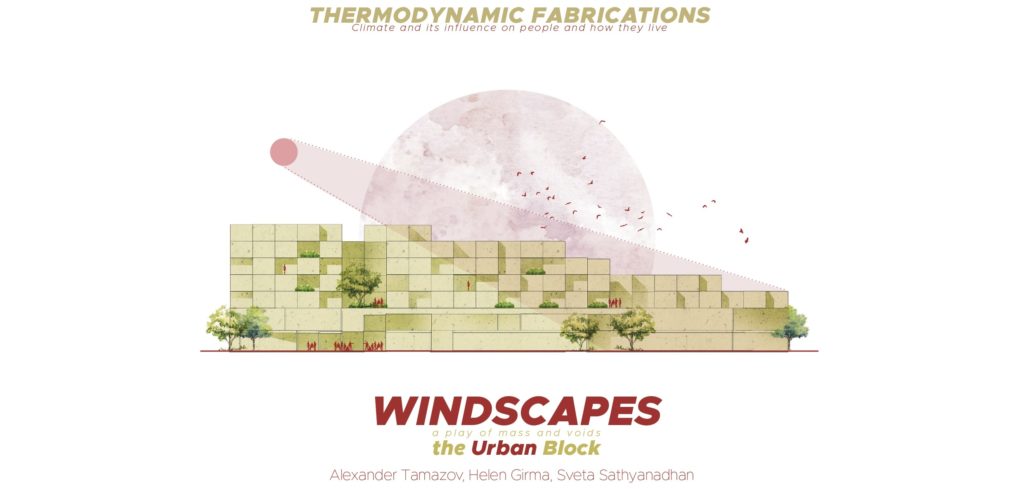
To properly kick off the development of the Urban Synthesis project, researching and prototyping during the Thermodynamic Fabrications workshop ended up being both very fascinating and educational. For better understating of the relationship between the project’s building site and the forces of nature, namely, wind direction and sun path, we created a prototype of a cottage for a single person. By the ways of its architectural design, the building maintains comfortable temperature throughout the hottest and coldest seasons of the year. During the process of creating the prototype, we learned the principals on which the environmental design is based on, and then applied them to the Urban Synthesis project and formed the massing of the building accordingly.
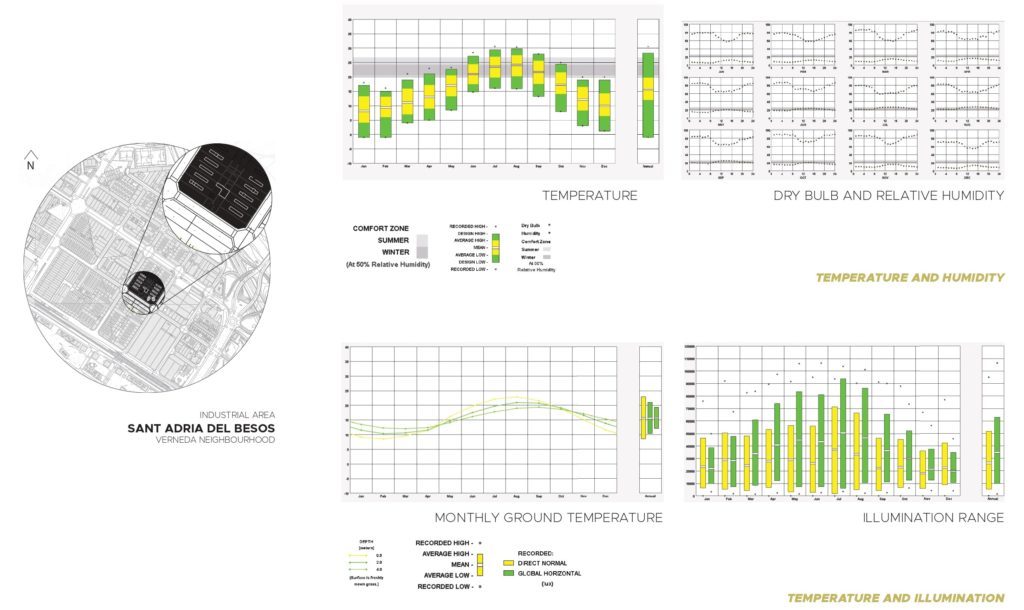
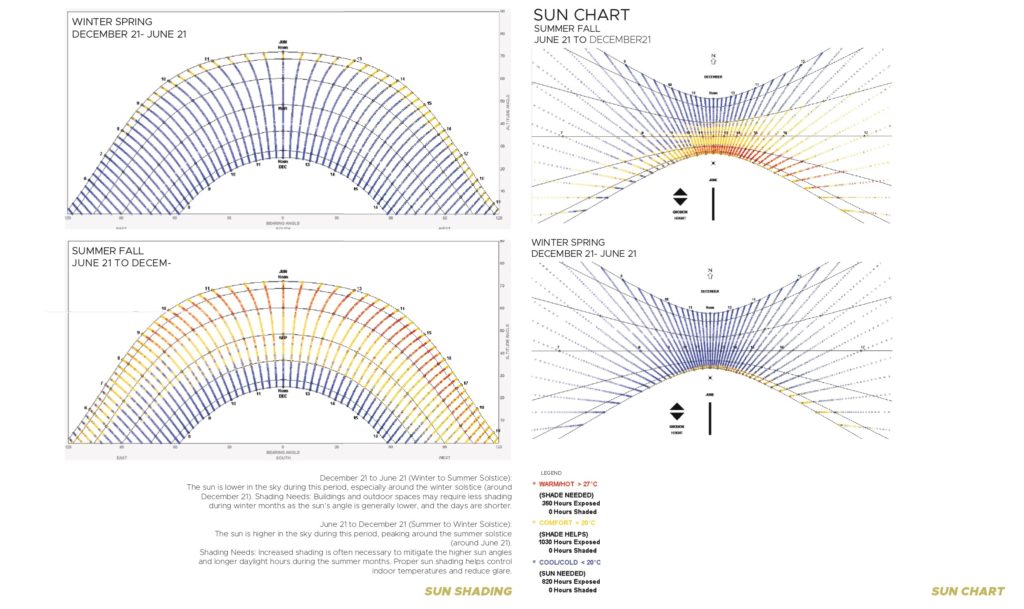
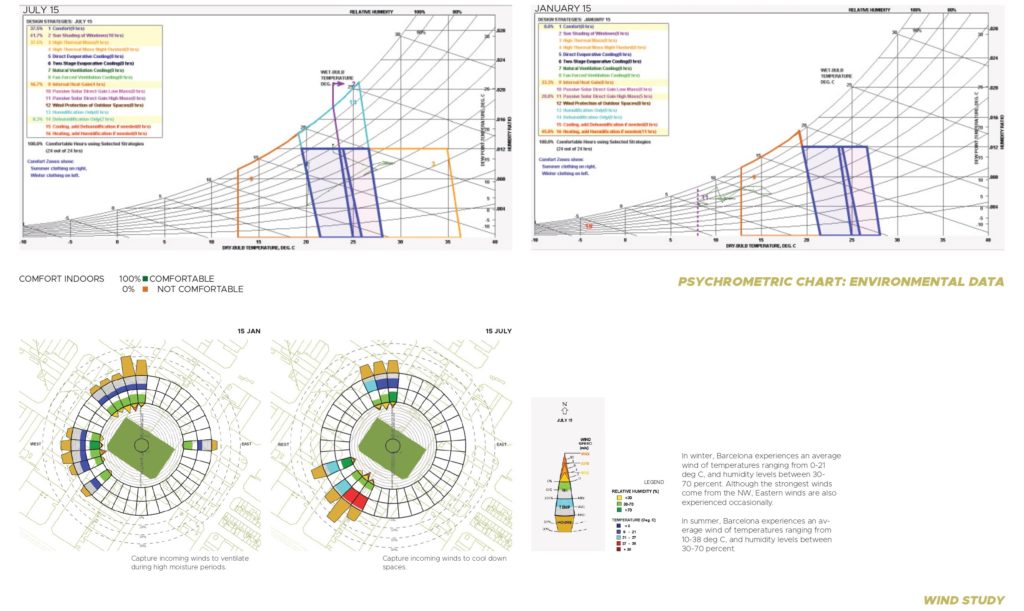
The main takeaways from working on a prototype were: the ways of getting climate data and charts and then designing using these data, the importance of orientation of the building, the use of overhangs to create shading, incorporation of courtyards for environmental and recreational properties, the implementation of perforated façade elements to control the intake of both the natural light and wind, and, last but not least, the modular morphology.
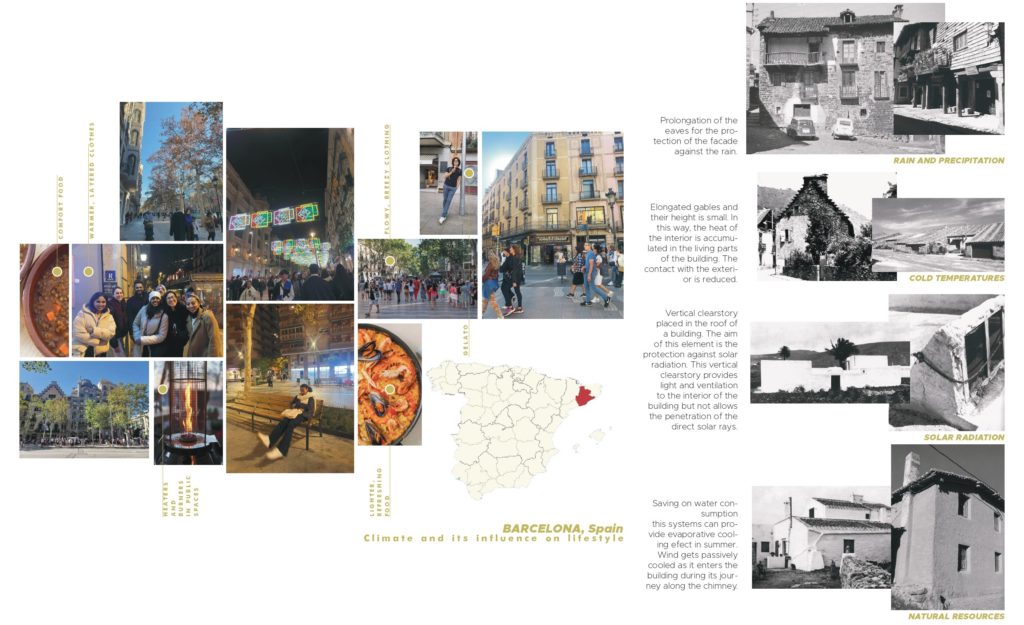
Mapping out lifestyles of people in Barcelona based on climate. Analyzing clothing, culinary influences, street culture, and activities allows us to design the prototype with reference to how people live. Drawing influences from local vernacular architecture, the prototype is also regionally relevant.

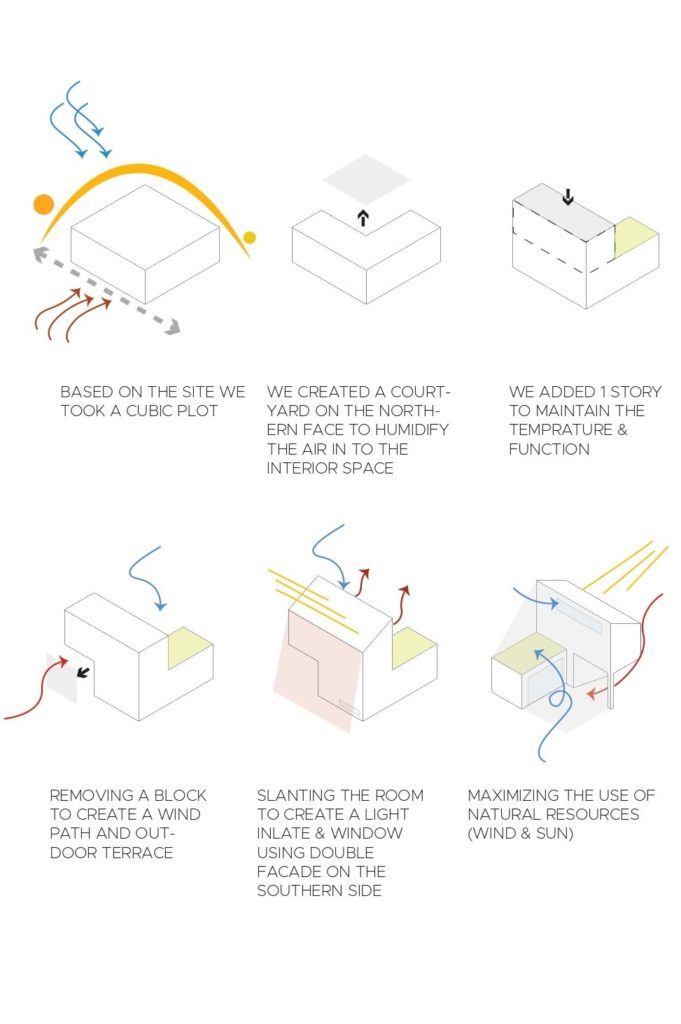
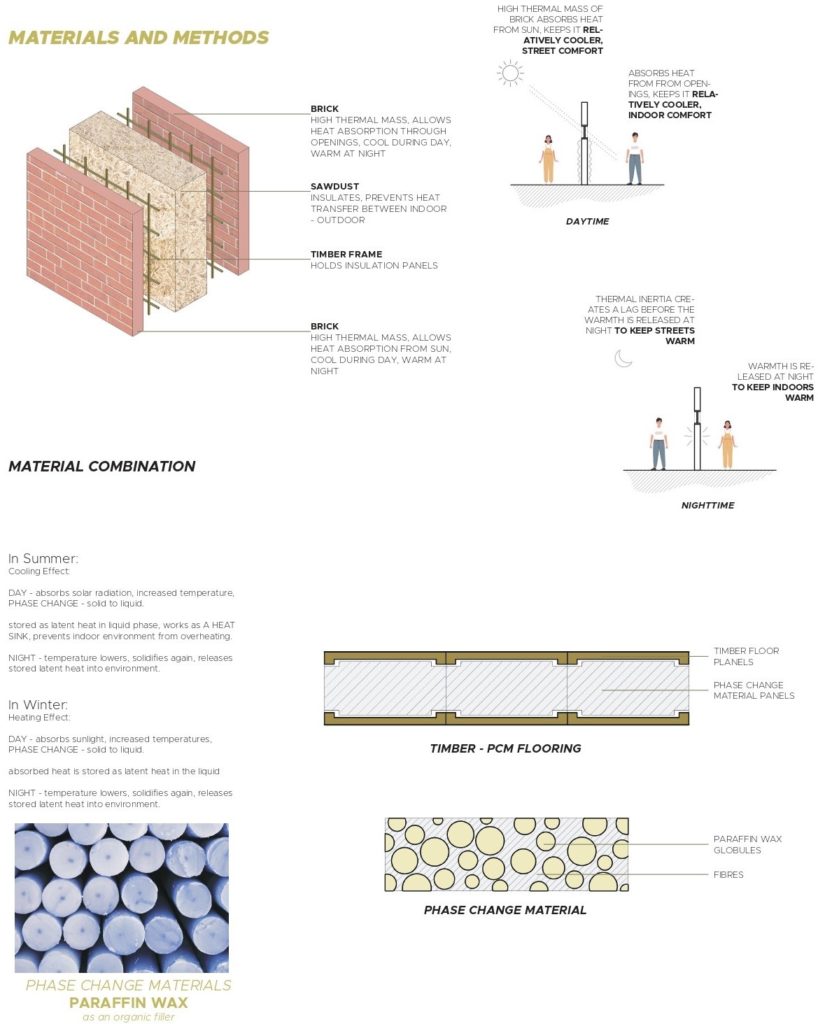
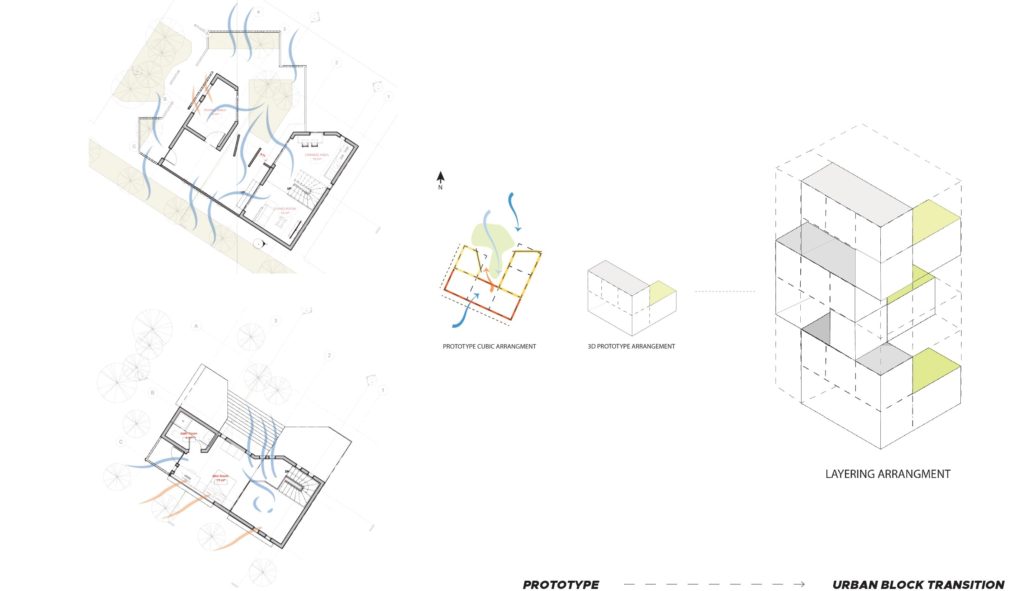
The positioning of openings on the North and South side allows a wind channel to maintain ample ventilation in the prototype at all times. Cool incoming winds circulate within the interiors and warm air is collected and rises due to lower density, stack effect. High openings work perfectly for this purpose. The use of a perforated secondary skin also allows to ventilate and illuminate spaces passively, and the versatility of being able to be moved based on summer and winter conditions makes it much more user-friendly.
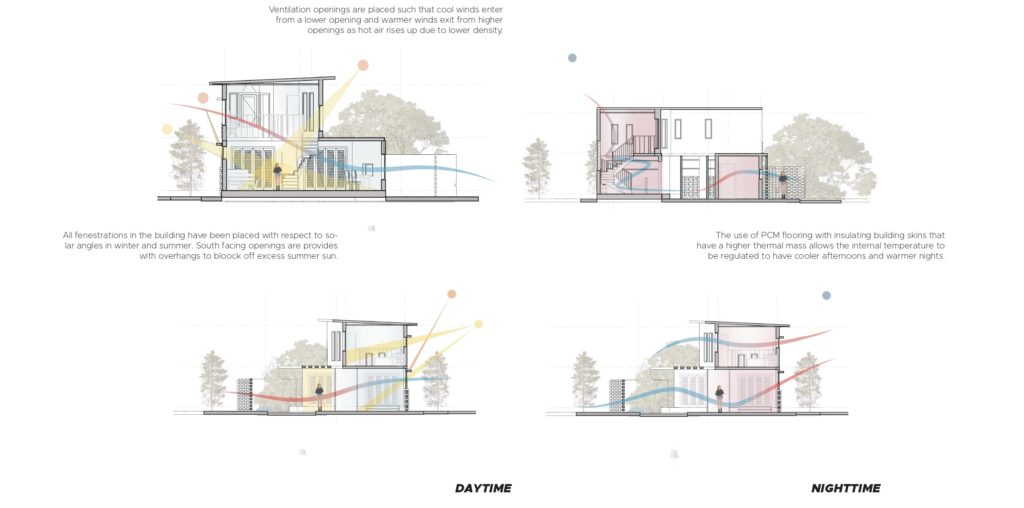
Based on our study through prototyping, we formulated two main ideas of our design approach for the Urban Synthesis project – dynamic adaptability and porosity. By introducing a 4m by 4m by 3m grid to our plot, we were able to create a porous structure that could be easily arranged according to the weather conditions of the area. The building massing that we came up with precisely controls natural ventilation, natural shading and helps organize the inner voids into courtyards and atriums. The courtyards serve not only as thermoregulators, but also as public spaces that visually connect the industrial part of the building with the residential as the building is divided into two semantic parts by the plinth.
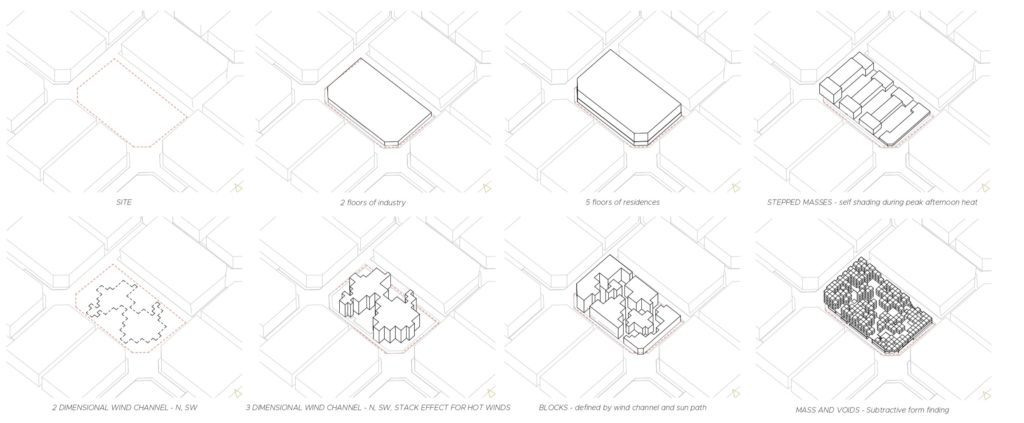
The form is based on the wind study that allows for a well ventilated project. The stepped blocks allow for a self-shaded form based on solar analysis. The building blocks are then formed based on the mass and void property, where openings and setbacks are created to make smaller community units.
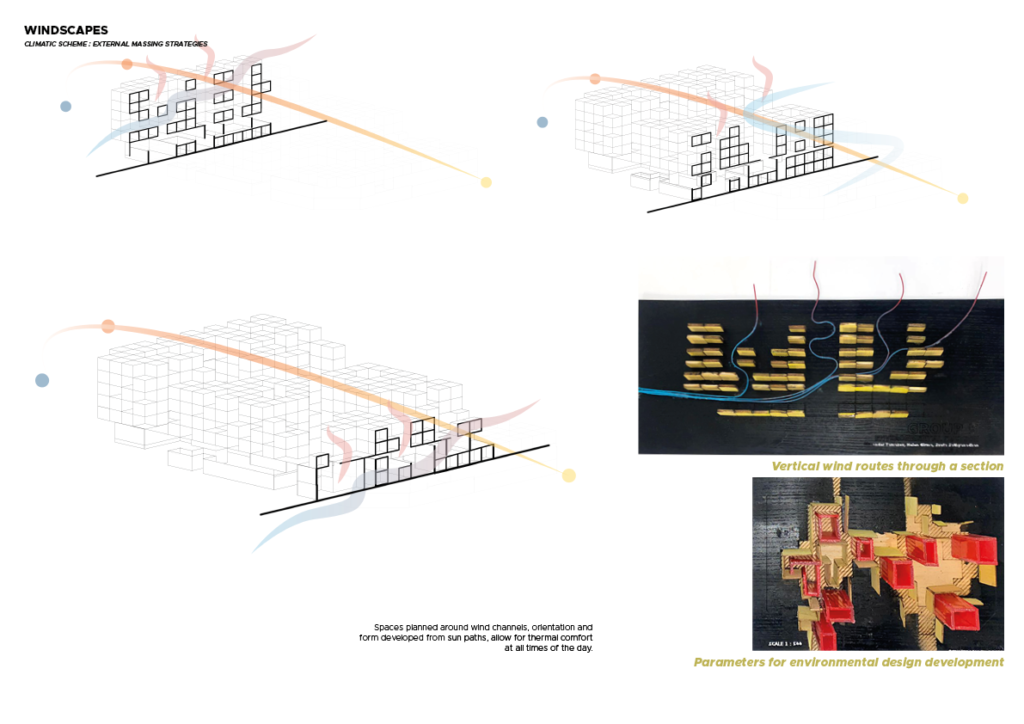
The models consolidate environmental parameters that helped define the volumes. The voids on the x axis follow the wind flow patterns of the site. In the z axis, openings are defined by the shade and shadow analysis.
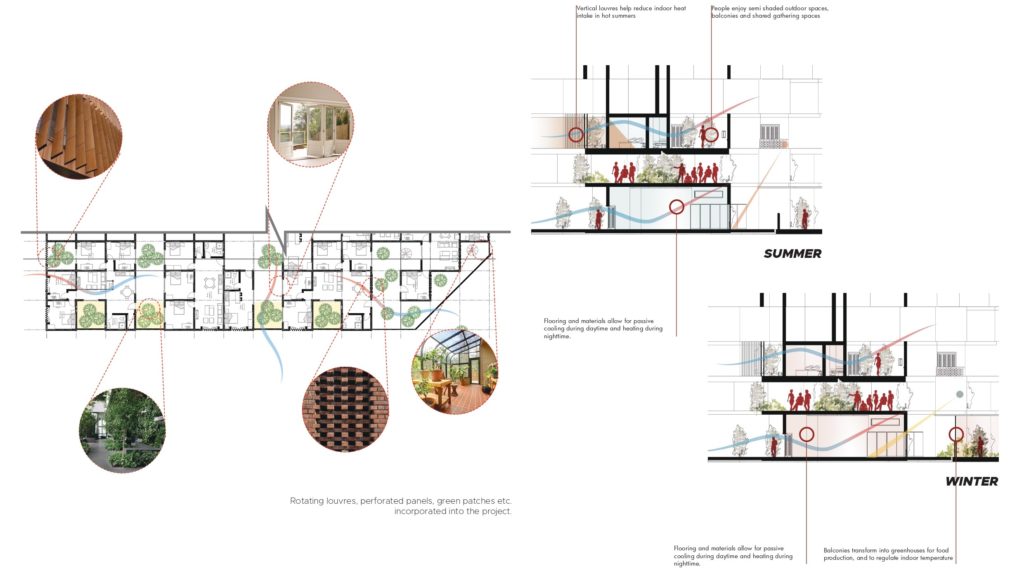

The information we gleaned from working on the prototype and the project, while looking at it from the point of view of thermodynamics, really expanded our understanding of comprehensive architectural design. With this in mind, we gained the fundamental understanding of how to make even more conscious decisions, when developing our future academic and commercial projects.

